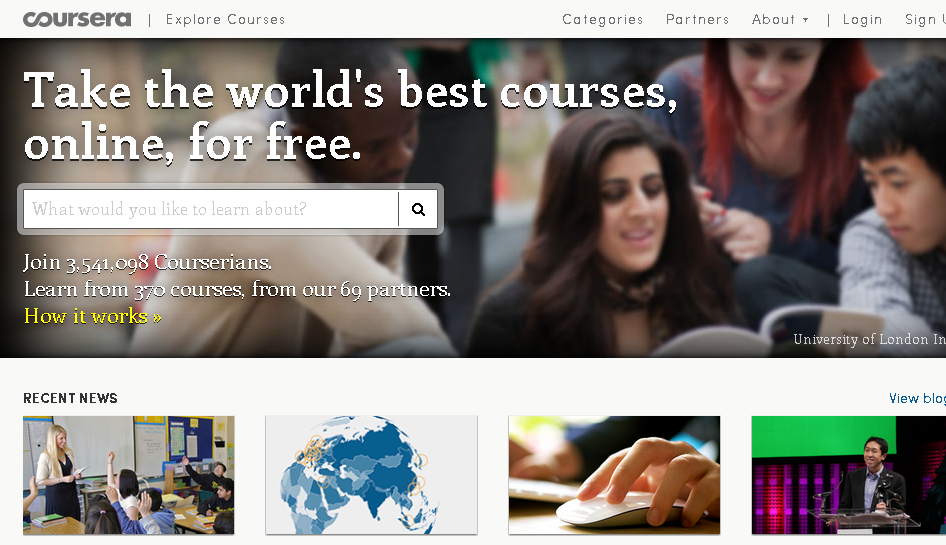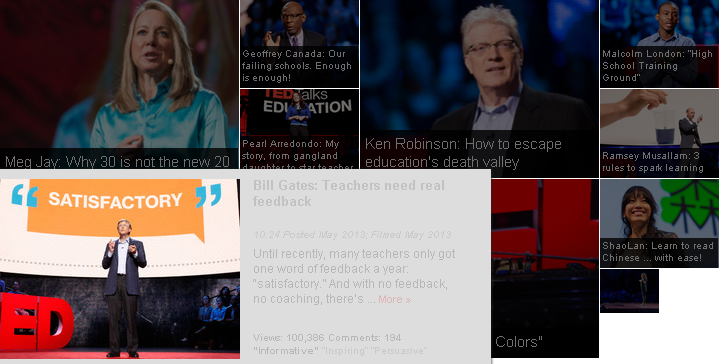E-learning for journalists: free courses and webinars
 MOOCs, massive open online courses, help journalists all over the world improve their skills and learn from the best without leaving their computer desk. That’s a great opportunity, especially for reporters from developing countries. In this post, we’ll explain how e-learning has evolved and where you can find free journalism-related courses.
MOOCs, massive open online courses, help journalists all over the world improve their skills and learn from the best without leaving their computer desk. That’s a great opportunity, especially for reporters from developing countries. In this post, we’ll explain how e-learning has evolved and where you can find free journalism-related courses.
E-learning has been around for several years. Many universities offer their lectures and study plans online. For example, e-learning platform edX offers free courses from several universities, however, the courses are not that numerous and are mostly technical. Harvard Open Courses offers courses on journalism, but the enrollment process is lengthy and, moreover, there’s a tuition fee, which means the courses are not really for the masses. Berkeley University,Yale University and Massachusets Institute of Technology also put their courses online, which are basically recorded class sessions.
Stanford University is doing something different by offering customized online sessions via the iTunes, but there’s still a heavy element of lecturing and no interaction with the instructor and other students.
These are all great opportunities for journalists to learn more about their profession without having to attend whole courses. But watching or listening to recorded classroom presentations is a rather one dimensional model.
MOOCs : changing the way we learn
MOOCs on the other hand are free, interactive, open to everyone and are usually paced like normal offline university courses. Each course normally takes four to eight weeks and has short tests as well as a final exam. To complete each course, you normally have to invest several hours per week: including watching videos, reading additional literature, completing tasks and interacting with fellow students in forums.

Today, MOOCs are redefining the very concept of education putting the focus on collaborative learning and short video lectures. Among the most well known MOOC platforms today are Coursera, Khan Academy and Udacity. Udacity mostly offers technical courses on maths, statistics, programming and web development, whereas Khan Academy is sort of an e-school covering a broad range of school subjects.
Coursera stands out from its peers offering an extremely wide range of university courses (more than 300 courses from 62 universities worldwide). Some courses are directly relevant for journalists. Apart from that, there’re numerous specialized courses which you might be interested to have a look at if you’re covering a particular beat.
E-learning courses for journalists from top universities
These courses offered by Coursera partner universities are worth taking a look at to gain deeper insight into media and journalism:
- Understanding Media by Understanding Google (for all journalists interested in media trends): You will learn how to understand the tactics that modern media companies, journalists, marketers, politicians, technologists, and social networks are using to reach you and affect your behavior. You will learn how to adopt strategies that put them on an even footing with these entities in achieving your own communications goals.
- Content Strategy for Professionals: Engaging Audiences for Your Organization (for communication experts and journalists working with blogs and social media): This professional Content Strategy MOOC is for people anywhere in an organization who have content development experience and now want to significantly improve their abilities to understand audiences and develop strategic words, pictures, graphics, and videos to convey their organization’s most important goals.
- Maps and the Geospatial Revolution (for data journalists): Learn how advances in geospatial technology and analytical methods have changed how we do everything, and discover how to make maps and analyze geographic patterns using the latest tools.
- The Camera Never Lies (for photojournalists): Film, images & historical interpretation in the 20th century for those who have a general interest in photojournalism, and films based on historical events.
- Design: Creation of Artifacts in Society (for journalists who are in love with media design, visualisation and infographics): Combine fundamental concepts with hands-on design challenges to become a better designer.
- Creative, Serious and Playful Science of Android Apps (for geeks among journalists): This course will provide a basic understanding of how to create your own Android app using Java and standard software development tools.
- Introduction to Digital Sound Design (for radio journalists): Learn more about music technology and have a look at free software tutorials.
Specialized MOOCs for journalists
Some media training organizations offer free open online courses for journalists as well as self-directed courses and tutorials with no start and end dates.
Data journalism
For those interested in data visualization with Google Fusion Tables, the National Press Foundation offers a screencast of its free webinar on Google tools for journalists. Google Fusion Tables is a basic tool for journalists working with data and data visualizations which doesn’t require any programming skills and is simple, effective and powerful.
Knight Digital Media Center offers webcasts of its free series on data journalism, each of four session takes about an hour. The sessions cover spreadsheet basics, introduction to data visualization, communicating with maps and introduction to data mapping.
Knight Digital Media Center also publishes a lot of useful presentations and webcasts on visual journalism and digital storytelling and tutorialson all things possible, including audio, data, photography, social media, video and web development.
Infographics and data visualization
In January, Knight Center for Journalism in the Americas launched a MOOC on infographics and data visualization led by the highly regarded infographics designer Alberto Cairo. Course participants learn how to analyze and critique infographics and visualizations in newspapers, plan for data-based storytelling through charts, maps, and diagrams, design infographics and visualizations that are informative, deep, and accurate. The course also explains principles of graphic design and of interaction design, applied to infographics and visualizations. The course is no longer available for registration, however, we’d recommend to keep an eye on further courses run by the Knight Center for Journalism in the Americas.
And, have a look at Alberto Cairo’s blog The Functional Art. In his MOOC, he used a lot of materials from his latest book of the same name. Here you can download three chapters from his book for free. You can also have a look at the post “How to evaluate infographics”, in which you will learn to to distinguish good infographics from bad ones.
For all who are interested in data journalism, visualization and infographics, Alberto Cairo conducted a free webinar on April 24.
TED which is a sort of YouTube for intellectuals offers many interesting talks by remarkable people on technology, design, business, entertainment, science and global issues. It also has a special e-learning section TedEd, where you can find this series on visualizing data. We would generally recommend to have a look at TED’s resources whenever you have a spare minute – and you’ll surely enhance your understanding of the world around you.

Online journalism, user experience and web design
More often than not, journalists have to deal with online audiences, optimize their texts for search engines and even do a part of the designer’s work.
In this self-paced course on Functional Web Design by Poynter News University, you’ll learn how to analyze a site’s strengths and weaknesses, organize site content, develop design prototypes and evaluate your site to improve usability. The course also offers a short introduction to SEO (search engine optimization). Don’t forget to click through other webinars and courses offered by the Poynter News University.
Also, be sure to check out free courses offered by a recently launched Australian platform Open2Study:
– User Experience for the Web (for online journalists): The course started in April and you will learn about tools and techniques you can use to begin to create great user experiences helping readers interact with your website or blog.
– Writing for the Web (for online journalists): Capture the attention of online readers by learning how writing style, web design and structure can keep them engaged.
Google search for journalists
Internet research is part and parcel of journalist’s work. Being able to find the information you are looking for quickly and efficiently gives you a clear advantage and lets you concentrate on other tasks. So be sure to check out Google’s own free courses on power searching. You will learn tips and tricks for making your Google searches more effective and efficient.
If you know other useful resources for journalists, including MOOCs, webinars and tutorials, let us know!
Author: Natalia Karbasova




Feedback